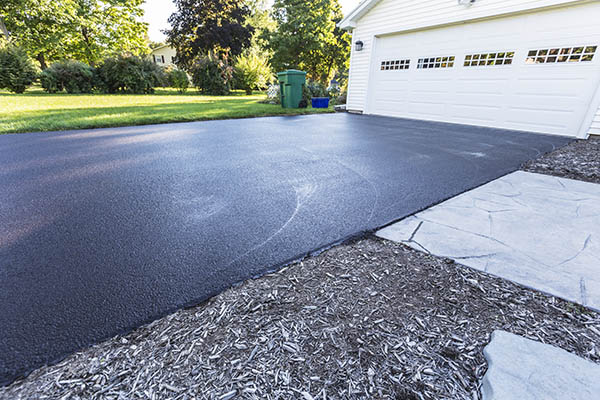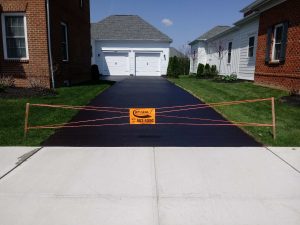Warm Mix Asphalt: A Lasting Solution for Sidewalk
Hot Mix Asphalt (HMA) has actually emerged as a leading sustainable selection for pavement solutions, offering a myriad of environmental benefits and cutting-edge innovations. As the demand for green building practices expands, exploring the subtleties of HMA's sustainability can offer valuable understandings into the future of sidewalk solutions.
Ecological Advantages of Warm Mix Asphalt

Furthermore, Hot Mix Asphalt helps to mitigate urban warmth island results. Its dark color absorbs sunshine, minimizing the amount of warm reflected back right into the atmosphere compared to lighter-colored sidewalks. This can lower ambient temperature levels in metropolitan locations, decreasing the demand for cooling and ultimately decreasing power intake.
Furthermore, Hot Mix Asphalt adds to enhanced stormwater monitoring. Its permeable nature enables water to charge and infiltrate the pavement groundwater materials, reducing runoff and the danger of flooding. These environmental benefits make Warm Mix Asphalt a lasting choice for leading roads and highways.
Power Effectiveness in HMA Manufacturing
Is energy efficiency a crucial factor in the manufacturing of Warm Mix Asphalt (HMA)? Energy plays a significant role in the manufacturing of HMA, affecting both price and ecological sustainability. One crucial aspect of power effectiveness in HMA production is the usage of warm mix asphalt (WMA) technologies.
Additionally, innovations in plant innovations have led to more energy-efficient HMA manufacturing procedures. By enhancing energy use in HMA manufacturing, the industry can reduce its carbon impact while keeping premium sidewalk products.
Recyclability of Warm Mix Asphalt
The recyclability of Hot Mix Asphalt (HMA) is an essential aspect of its sustainability and lasting environmental effect. HMA is just one of one of the most recycled materials in the USA, with over 100 million loads of reclaimed asphalt pavement (RAP) being reused annually in brand-new pavement building. Reusing HMA supplies a number of environmental advantages, such as lowering the requirement for virgin products, decreasing power intake during production, and reducing the quantity of waste sent out to land fills.
The procedure of reusing HMA involves grating the existing pavement, crushing it into smaller pieces, and mixing it with new aggregate and asphalt binder to develop a recycled mix. This recycled mix can often perform along with and even better than conventional HMA, while requiring less raw products and creating lower greenhouse gas discharges. By integrating RAP into new pavement tasks, road agencies can conserve natural sources, minimize prices, and minimize the ecological impact of road construction and maintenance activities. In general, the recyclability of HMA plays a considerable role in promoting lasting techniques within the sidewalk industry.

Long-Term Performance of HMA
Asphalt sidewalks show toughness and durability over a prolonged period, mirroring the lasting efficiency of Hot Mix Asphalt (HMA) Furthermore, improvements in HMA technology, such as the use of polymer-modified binders and warm mix asphalt, have actually even more improved the durability and durability of HMA sidewalks. By prioritizing quality building and construction and maintenance methods, HMA proceeds to prove itself as a sustainable and economical remedy for resilient sidewalk infrastructure.

HMA: Durability and Sustainability
Showing both toughness and sustainability, Warm Mix Asphalt (HMA) has actually become a keystone in the building check over here of long-lasting sidewalk infrastructures - angled parking. HMA's durability stems from its ability to hold up against heavy lots, severe climate conditions, and high website traffic volumes, making it a dependable choice for streets, freeways, and flight terminal paths. The composition of HMA, which typically consists of accumulations, binder, and filler, plays an essential role in improving its durability and investigate this site resistance to damage
Additionally, HMA's sustainability depends on its recyclability and energy-efficient manufacturing process. The capability to recycle redeemed asphalt pavement (RAP) in new HMA combinations reduces the demand for virgin products and decreases the ecological effect of sidewalk building and construction and maintenance. Furthermore, the energy performance of producing HMA exists in its reduced blending temperature levels compared to other pavement products, leading to decreased energy usage and greenhouse gas exhausts.
Verdict
In verdict, warm mix asphalt (HMA) uses a lasting option for sidewalk with its eco pleasant characteristics. HMA's recyclability, energy performance in manufacturing, and long-lasting sturdiness make it an environment-friendly choice for roadway building and construction.
HMA is one of the most recycled materials in the United States, with over 100 million loads of redeemed asphalt sidewalk (RAP) being reused every year in new sidewalk building.The process of reusing HMA involves crushing the existing pavement, squashing it into smaller items, and mixing it with brand-new aggregate and asphalt binder go now to develop a recycled mix.Asphalt pavements demonstrate resilience and strength over a prolonged duration, reflecting the lasting performance of Hot Mix Asphalt (HMA) In addition, developments in HMA modern technology, such as the use of polymer-modified binders and cozy mix asphalt, have additionally enhanced the toughness and durability of HMA sidewalks. The ability to reuse redeemed asphalt pavement (RAP) in new HMA mixes reduces the demand for virgin products and decreases the environmental influence of pavement building and construction and maintenance.